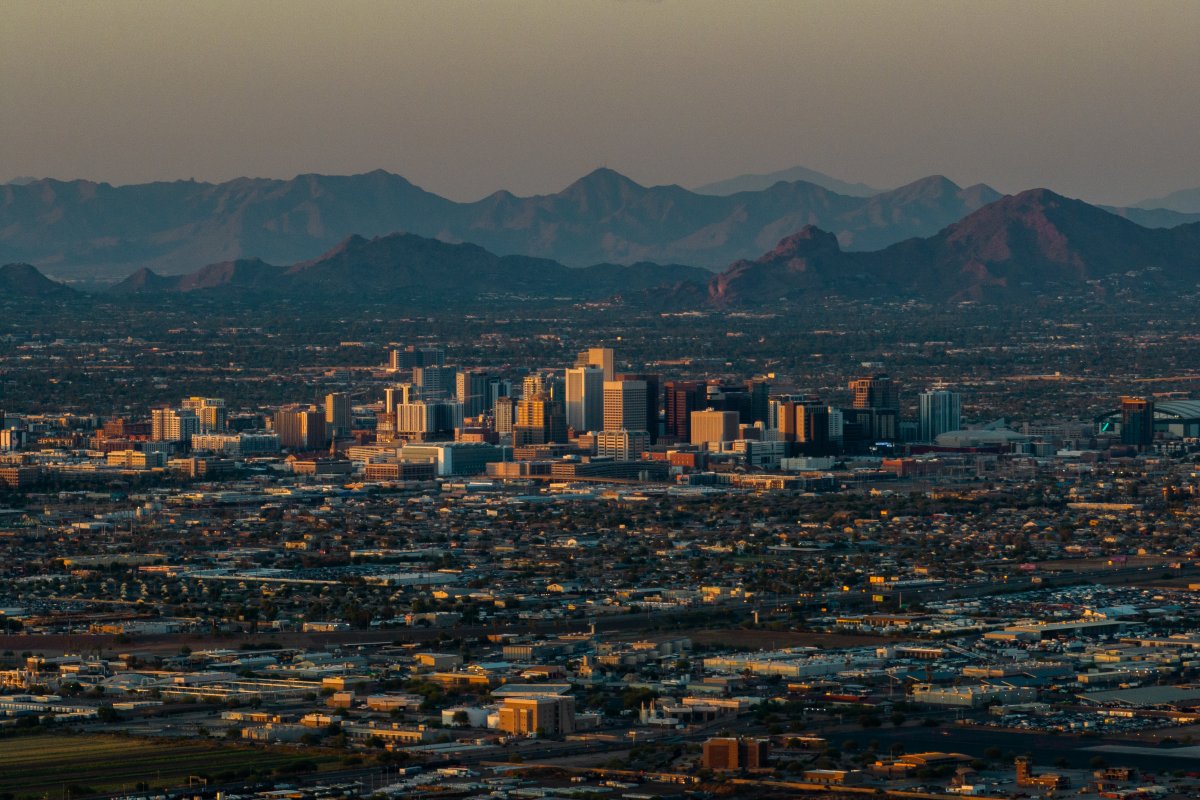Air quality alerts were in effect across parts of two states on Tuesday morning, with officials waring of potential health effects for some residents in Arizona and Ohio.
Why It Matters
Experts warn that individuals in sensitive categories—such as seniors, young children, and people with respiratory illnesses—face heightened risk during times of poor air quality.
What To Know
In Ohio, an air quality advisory issued by the Northeast Ohio Areawide Coordinating Agency for fine particles, affecting Ashtabula, Cuyahoga, Geauga, Lake, Lorain, Medina, Portage and Summit Counties.
It warned that air quality levels would be unhealthy for sensitive groups throughout Tuesday.
“If you are in the sensitive groups category of children, the elderly and those with breathing difficulties, please monitor your outdoor activity,” it said.
To help reduce air pollution, residents in affected areas were advised to drive less, bike, walk, or work from home.
In Arizona, the state’s Department of Environmental Quality issued an ozone high pollution advisory for the Phoenix metro area on Tuesday.
Officials said that weather conditions combined with current ozone levels were expected to create high concentrations of the pollutant that could harm health.
“Adverse health effects increase as air quality deteriorates,” read the alert.
Read more
- Millions across three states warned to stay indoors
- Map shows 2 states where children warned of breathing difficulties
- Dangerous ocean conditions warning issued for five states
“Ozone is an air contaminant which can cause breathing difficulties for children, older adults, as well as persons with respiratory problems. A decrease in physical activity is recommended.”
Residents were urged to carpool, telecommute or to use mass transit. Gasoline-powered equipment should be used later in the day, or used less, the alert said.

What People Are Saying
AccuWeather meteorologist Brandon Buckingham told Newsweek previously: “Ozone is a secondary pollutant, meaning it’s not emitted directly from sources, but is formed through chemical reactions. These reactions require sunlight and higher temperatures, making warmer months more prone to ozone formation. When air is stagnant, pollutants don’t get dispersed, allowing ozone to build up to unhealthy levels.
“Ozone pollution is often more severe in urban areas where there are higher concentrations of pollutants from sources like cars, power plants, and industrial activities.”
Jonathan Grigg, a professor of pediatric respiratory and environmental medicine at Queen Mary University of London, told Newsweek previously that there are “very clear links” between inhaling particles and earlier death from both respiratory and cardiovascular diseases.
He added that conditions such as asthma are exacerbated by exposure to air pollution.
What Happens Next
At the time of writing, the alerts for Arizona and Ohio were in effect through Tuesday.
Agencies such as the National Weather Service issue regular forecast updates.




